#explorere
Text




Shadowcat's Catamaran Concept "Catfish"
#art#design#superyacht#megayacht#ocean#luxury yacht#sea#boat#ship#catamaran#yacht concept#render#shadowcat#explorere#catfish#shadow yacht
25 notes
·
View notes
Text
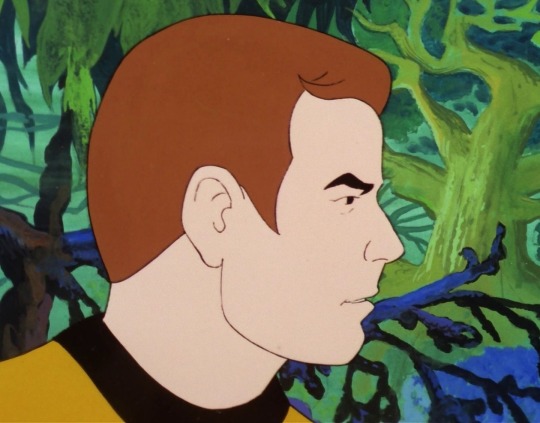
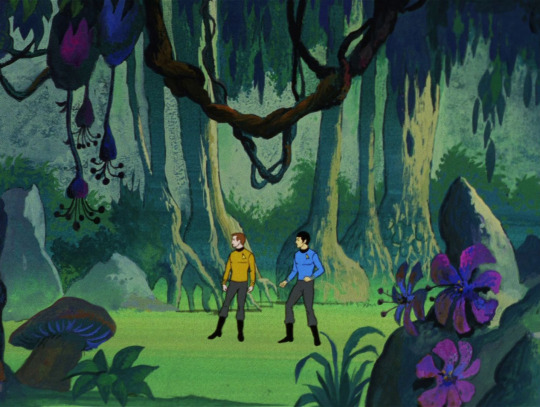


S2E2: Bem ⋆.˚ ✧ ·˚⊹
#LOOK HOW WHIMSICAL#lil explorerer dudes#they are just frolicking in the jungle#where they belong#spirk#star trek#spock#star trek the animated series#tas#captain kirk#the original series#1980s#cartoon#illustration#animation#background#environment
124 notes
·
View notes
Text
that art may or may not have been an attempt to convince more pmd fans to play isat
#bwark#listen. listen. to the pmd fan reading this. if you love pmd you'll love isat#not even just gates to infinity. there's explorerisms in there too#like i have a running bit about id5 not beating the pmd fan allegations and ofc i mean this in a jokey way because i have no way to prove it#but like......there's SOMETHING there ya know?#also i just really love the idea of my previous favourite game (eos) possibly being a direct inspiration for my new favourite
8 notes
·
View notes
Text
it's actually so funny (not funny at all) how europeans coming to colonize the americas were all "we want to bring freedom to these uncivilized people!! they have no freedom!!" when the american people literally. had way more freedom
#reading the first chapter of my textbook and it's actually crazy what some of these european generals/exploreres/etc thought#some literally saw women working in fields and were like. !! they are OPPRESSED!! FREEDOM is staying inside the house!!#and another guy wrote in his journal or whatever that they lived in “absolute freedom.” as. an insult.#huh???#unityrain.txt
2 notes
·
View notes
Text
Reading this article and then watching this video (I am only halfway through the video) has me even more concerned by "parents rights" groups than I was already (which was already pretty fucking concerned due to book bans and subject matter (ethnic studies, sex ed, Black history month) bans).
Like, school can absolutely suck and fuck people up for life. But so can parents. Children need increasing amounts of independence as they age, so that they can figure out who they are, how to do things on their own, and how to ask for help when they need it. Hypersurveillance does not prevent abuse to the best of my knowledge.
youtube
#personal#education#parenting#No but seriously why the fuck can the parents watch in real time what the children are doing on the computers in school??????#Bring back computer labs and USB sticks. Children get more privacy AND they learn how to use the file explorerer. Win-win.#Plus the kids can't play Minecraft during class if it isn't installed on the computer.#(I am neither a trained educator nor childcarer. These are just my ideas not a foundation for a sound policy.)#Youtube
2 notes
·
View notes
Text

I love the internet
2 notes
·
View notes
Text
How Billions of Dollars and Cutting-Edge Tech Are Revolutionizing Ocean Exploration
What lurks beneath the waves? State-of-the-art robots, ships, and submersibles are helping a new generation of explorers finally understand the most mysterious habitat on Earth.
— ByAnnie Roth | August 15, 2024

Sperm Whales can hold their breath for up to an hour and dive more than a mile below the surface. OceanX scientists are interested in how these marine mammals hunt in such deep waters. Photograph By Brian Skerry, National Geographic
On a warm June morning, a 286-foot private research vessel set off from the green and rocky sea cliffs of the Azores, a chain of islands jutting upward from the North Atlantic Ocean, about a thousand miles west of mainland Portugal. The gleaming white OceanXplorer, rising high above the water, resembled a modified superyacht, with a helicopter pad on the bow and a pair of yellow submersibles near the stern. Below the surface, the ship’s hull featured a high-resolution sonar array to map underwater terrain.
The OceanXplorer had embarked on a unique mission: to tag and retrieve data from bluntnose sixgill sharks in their natural environment, an area so deep that much of their behavior remains a mystery. These prehistoric predators, whose ancestors first appeared 200 million years ago, can grow up to 18 feet long. They’re concealed within the ocean’s mesopelagic layer, or “twilight zone”—a frigid region reaching 3,000 feet down that’s nearly devoid of light. Still, each evening, the slow-moving yet buoyant sixgills here make a three-hour journey up to shallower waters to feed at a known hunting spot on the ledge of an undersea mountain near the Azores.

Top: OceanXplorer is a vessel with a helicopter, submersibles, and small boats for research missions. Here, deck safety officer Derek McQuigg operates a small craft in Sognefjorden, Norway’s longest and deepest fjord. Photograph By Taj Howe, OceanX
Bottom: A submersible launched from the OceanXplorer illuminates seafloor terrain in the Red Sea. Underwater geologic features are difficult to explore, but submersible and ROV technology allows scientists to study them up close. Video Still, OceanX

OceanX scientists, including Melissa Márquez, attempt to attach a camera tag to a sixgill shark from a submersible at a depth of more than 800 feet. They journeyed so deep hoping to capture the shark’s natural behavior. Video Still: OceanX
On board were nearly 70 crew members, including shark biologist Melissa Márquez, who grew up in Mexico; deep-sea researcher Zoleka Filander, a South African ecologist who has discovered several new species of invertebrates; ocean technology inventor Eric Stackpole, a NASA veteran who co-founded an underwater robotics company; and two guest scientists from Portugal’s University of the Azores, Jorge Fontes and Pedro Afonso, who had developed a tag that tracks sharks and provides video.
The team hoped to locate at least one sixgill, attach a camera tag to it, and then retrieve the tag later—something never accomplished before in the deep sea. It would require a series of dives in one of the onboard “bubble subs”— so called because of the acrylic globe that houses passengers. Even then, they would get only a glimpse into this hidden world; the tag would automatically release after 12 hours and float to the surface for recovery. Recovering the data, however, would mark a scientific first, yet another in a series for the team, which works with the nonprofit initiative OceanX. Over the past few years, its researchers have taken dramatic footage of orcas hunting humpback whales and separately made audio recordings of how male humpbacks might use undersea terrain to amplify their mating songs. They have also captured rare footage of the Dana octopus squid in its natural habitat.
If such moments sound particularly entertaining—sharks! whales!—that was by design. The OceanXplorer is the flagship of OceanX, an exploration and media venture co-founded by Ray Dalio, the billionaire founder of the hedge fund Bridgewater Associates, and his son Mark, who has previously co-produced shows for National Geographic. The group launched in 2018 with the stated goal to “explore the ocean and bring it back to the world.” This has involved converting a former Norwegian support vessel for oil rigs into a mobile scientific research center and film set. OceanX advisers include James Cameron, the Hollywood director of Avatar and Titanic.

A Mother Humpback Whale will stay with her Calf for about a year. The nonprofit OceanX filmed one pair being hunted by orcas and investigated whether the shape of the seafloor amplifies the humpback whale’s song. Photograph By Brian Skerry, National Geographic Image Collection
Beyond the helicopter and the bubble subs, which can take explorers to 3,280 feet underwater, the vessel also carries a remotely operated vehicle (ROV) for filming far deeper, plus its own wet and dry laboratories and a holographic viewing table for researchers to generate seemingly made-for-TV models of the data they collect from the deep ocean. There are more than 3,000 film-quality light fixtures throughout the boat. And starting in August, viewers around the world can tune in to see the result of the sixgill expedition, which is part of the National Geographic series OceanXplorers. “There’s never been a more urgent need to understand our ocean and the animals that call it home,” Cameron narrates in the series. “Because their lives, and ours, depend on it.”
OceanXplorers is inspired by the work of Jacques-Yves Cousteau and Louis Malle, who together released the film version of Cousteau’s best-selling book The Silent World nearly 70 years ago. The documentary was among the first underwater films shot in color and sparked worldwide interest in the ocean. That included Ray Dalio, who was entranced by Cousteau’s work and has shared that enthusiasm with his son. “How do you create a Cousteau moment for the modern age?” says Mark Dalio.
The modern age could use an updated Silent World. New technologies are on the cusp of unlocking scientific breakthroughs, but only if they’re funded—which means people need to care and demand action. Spurring that through a series of six 30-minute-plus episodes might sound a bit far-fetched, but as the footage reveals, each journey can lead to even more surprising discoveries.
Advancements In Ocean Exploration Through The Ages:

Top Left! 2012: Filmmaker and Explorer James Cameron exceeds the 1960 depth record at Challenger Deep, which was then surpassed by Victor Vescovo in 2019. Photograph By Mark Thiessen, National Geographic Image Collection
Top Right! 1970: Scuba gear allows scientists like National Geographic Explorer at Large Sylvia Earle to spend hours underwater. Photograph By Bates Littlehales, National Geographic Image Collection
Middle Left! 1934: Engineer Otis Barton and naturalist William Beebe dive below 3,000 feet, a human first, in a vessel called a bathysphere off the coast of Bermuda. Photograph By William Beebe, National Geographic Image Collection
Middle Right! 1960: Jacques Piccard and Don Walsh are the first to visit Challenger Deep, the lowest region of Earth’s oceans. Photograph By AFP Via Getty Images
Bottom Left! 1977: U.S. scientists discover hydrothermal vents via an underwater camera and temperature sensor. To their surprise, life thrived in this sunless environment. Photograph By Rov Subastian, Schmidit Ocean Institute
Bottom Right! 2024: Caltech engineers test the potential of bionic jellyfish—live jellies equipped with sensors to record information as they swim. Photograph By David Liittschwager, National Geographic Image Collection
At around 10:30 p.m., cameras rolled from all angles as the Neptune, one of the OceanXplorer’s three-person bubble subs, dangled from a large crane, suspended over the dark ocean. Inside, Márquez, the shark biologist, sat near Afonso, a marine ecologist, and a submarine pilot. Márquez and Afonso had never had the chance to scout for sixgills directly from a sub. Multiple cameras captured the researchers’ wide-eyed expressions as the submersible dropped into the ocean and quickly disappeared below the surface.
Step one in tagging a sixgill: Conduct a population survey in the area, where the sharks are known to convene at night after spending their days deeper in the ocean.
After Márquez and Afonso descended to a ledge more than 800 feet down, they saw something large moving past their submersible’s headlights.
“Shark, shark, shark!” Márquez called out, looking both excited and a little startled. “That’s huge. Adult. Definitely an adult. About 15 feet long.”
She could see right away that the animal was female because of the lack of claspers, or sexual organs, under its pelvic fin.
Over the course of eight hours under water, the team spotted 11 sixgills, which had traveled an estimated 1,800 feet upward to look for food. Each shark seemed to have a different temperament, with some keeping their distance and others swimming directly at, or even right below, the sub.
They were also all female, except for one juvenile male, supporting the idea that the animals may travel in single-sex groups outside of mating season.
None of the potential targets moved quickly. “She’s so sluggish,” Márquez said as one of the sharks passed by, illuminated by the light of the sub. “I guess she’s conserving her energy. And it’s cold out there; it’s only 39 degrees.”

The Deep Sea Still Has Plenty of Mysteries to Reveal. It is the largest habitat on Earth, comprising more than 95 percent of the ocean, yet remains the least explored. At the first ever United Nations Ocean Conference, in 2017, an international coalition of scientists announced its intention of using multibeam sonar to generate a detailed map of the seafloor in its entirety by 2030.
When the initiative was first introduced, only 6 percent of the seabed was mapped to an adequate resolution; that figure now is 25 percent mapped in high resolution, with more terrain being added every day.
That effort may reveal a better understanding of the seafloor, but when it comes to ocean conservation, researchers face the additional challenge of trying to protect an ecosystem that’s still not well surveyed. The vast majority of species in the ocean—by one estimate, more than 90 percent—have yet to be classified. Rather than just cataloging discoveries, ocean-exploration entities have also put effort into better relaying the wonder of the unknown. By 2019, private equity investor Victor Vescovo piloted a submersible to the lowest point of all five ocean basins, setting a record for the deepest crewed dive in history when he reached the bottom of the Mariana Trench in the Pacific Ocean, at a depth of nearly 36,000 feet.

Great Hammerhead Sharks (at left and bottom) cruise along the seafloor in the Bahamas. Scientists are scrambling to learn more about these critically endangered creatures. The OceanX helicopter crew followed one on a stingray hunt. Photograph By Chelle Blais, Bimini Shark Lab
“We have an ability to see, hear, and sample [the ocean] in ways that we just never had before,” says Chris Scholin, the president and CEO of the Monterey Bay Aquarium Research Institute, a nonprofit oceanographic organization based on California’s central coast.
Submersibles, satellites, drones, ROVs, autonomous underwater vehicles, and undersea observatories are giving scientists and explorers unprecedented access to the ocean. As a result, scientists are discovering an average of 2,000 new marine species each year.
“It’s amazing what’s happened in the last few years,” says Jyotika Virmani, executive director of the Schmidt Ocean Institute, a nonprofit dedicated to science and exploration that recently aided discovery of more than a hundred species believed to be new to science during expeditions to a seamount chain off the coast of Chile. “Things are happening, and they’re happening faster and faster. There’s been an almost exponential increase in information that we’re getting about the ocean.”

Seamounts, the mysterious mountains of the ocean, are hot spots for life like these green feather stars living on deep-sea coral at 3,000 feet, as seen in recent scientific surveys supported by the Schmidt Ocean Institute. Photograph By Rov Subastian, Schmidit Ocean Institute

Other marine creatures observed include a bright red member of the sea toad family that can walk on the seafloor at 4,556 feet and the rarely seen whiplash squid at 3,625 feet. Photographs (Top & Bottom): By Rov Subastian, Schmidit Ocean Institute
One of OceanX’s goals is to telegraph the vast human health and innovation losses that may occur if important species disappear before we can learn more about them. “The ocean is just a huge library of DNA that can be exploited by humans for medical purposes, manufacturing—all kinds of things,” says Vincent Pieribone, OceanX’s co-CEO and a professor at the Yale School of Medicine. Compounds from marine life are actively being investigated for their potential as antibiotic and antiviral medications and even for components of artificial bone.
The majority of the narrative being shared right now is “the obituary of the ocean,” says Philippe Cousteau, Jr., a filmmaker, explorer, and grandson of Jacques-Yves Cousteau. “I think that has held back capturing the public’s imagination.”
After Confirming The Underwater Ledge was a feeding spot for sixgills, the team decided it was ready to tag a shark. Around midnight on another evening, the Neptune shuttled Márquez and marine ecologist Fontes back to the ledge, passing through a shoal of boarfish so dense it temporarily obstructed the bubble sub’s view.
This time, decaying fish had been secured to an extended metal rod, which projected several feet in front of the submersible to entice a sixgill. “Come on, Big Mama,” Márquez said, as if willing a shark to appear.
When the first sixgill arrived, it ignored the bait, focusing instead on a morsel that had become detached and floated to the bottom, and stayed out of range. Some time later, two more sharks appeared, with the larger one chasing off the smaller, probably to protect the new food source. At a certain point, one creature’s large, trapezoidal tail knocked the sub with an audible thump, startling everyone behind the six-and-a-half-inch acrylic hull.
The Neptune was outfitted with a laser-sighted spear gun that could fire a kind of arrow into the skin of the sixgill. Connected to the arrow was the tracker—a small, red, hard-foam package that housed a camera and other sensors capable of monitoring the animal’s speed, depth, and movements for up to 12 hours.
When the larger of the two sharks came into view, Fontes pressed a button to fire the arrow, but it shot wide, narrowly missing the moving target.
“Damn it,” he said.
Márquez grabbed her head. “I can’t believe it,” she said, before signaling that another shark was approaching. With only one arrow left, the pressure was on. This time, Fontes was able to hit the animal’s large torso. Up in the OceanXplorer’s mission control room, Stackpole, the underwater robotics technician, and Afonso watched with excitement and gave each other a high five.
Sixgills Likely Haven’t Changed Much in 200 Million Years and retain features from the Jurassic age. When the tagged shark reapproached Neptune to finish its meal, cameras captured its eyes rolling back into its head as it shook the bait. Unlike many sharks, sixgills don’t have a retractable membrane to protect the eye while hunting; instead their eyes just … roll back. For the crew, it was a visceral reminder of how different these animals are.
Because sixgills are especially buoyant, one working hypothesis for how these sharks hunt has been that they may float upward along ridgelines in the ocean, seeking silhouettes from potential prey that they can ambush.
While the show focused on the red camera tag, it was accompanied by another, more basic satellite tag that could transmit movement data for an additional nine months, allowing the researchers to continue to learn more about the species’ vertical migrations. Such underwater monitoring is important: Although scientists can catch deep-sea sharks with nets or hooks and pull them to the surface, being dragged from the deep can cause potentially fatal pressurization injuries for the creatures. Stressed animals don’t make great study subjects either, which is why scientists at OceanX want to tag them in their environment.
Once reviewed at the mission control room, the data retrieved from the tracker appeared to support the thesis about the sixgill’s hunting method. The shark would travel slowly, with short upward bursts of speed that might signal it was ambushing prey from below.
OceanX missions aren’t all focused on thrashing sharks and whales. Often they pursue the more prosaic business of mapping. While the OceanXplorer tracks sharks and films whales, the vessel is also using its own sonar array to add to the growing body of data about the seafloor. In 2019 OceanX conducted an end-to-end survey of the largest coral reef system alongside the continental United States. It also conducted yet another voyage off the Azores, in 2023, producing yet more findings on underwater seamounts and ridges to support the designation of 30 percent of the region’s economic zone waters as marine protected areas. Scientists working with OceanX have contributed to nearly a hundred research papers, on topics ranging from coral-dwelling crabs to microbial life around hydrothermal vents.
“The sea, once it casts its spell, holds one in its net of wonder forever,” Jacques-Yves Cousteau wrote. At a time when the public’s increasingly short attention span may make it harder to digest complicated information, OceanX is trying to perpetuate that spell.
Dalio, the nonprofit’s co-founder, says he wants OceanXplorers “to be a launch, not just of a series but of a new awareness and excitement about the ocean,” adding he wants to “create a wave” that gets others involved and working together. If that can happen, he says, “we really are on the brink of a golden age for ocean exploration.”
What its scientists share with the public seems to be getting attention: OceanX has more than four million followers on TikTok.

Top: Mystery lurks beneath the waves. Greenland sharks can live for centuries, but little is known about how they hunt and survive in deep, cold Arctic waters. The OceanX crew tagged one to measure its movements. Photograph By Mario Tadinac, National Geographic
Bottom: OceanX science program director Mattie Rodrigue examines a sample on one of the ship’s high-power microscopes. State-of- the-art labs like this one seek to narrow vast knowledge gaps in marine science. Photograph By Andy Mann, OceanX
During Another Dive in the Sub, Márquez and Afonso witnessed a large sixgill skim close to the floor of the ledge. This might be attributed to the animal’s use of highly attuned electrical sensors in its head to detect movements of other creatures in the murk. But instead of seeing the feeding method their data suggested, what happened next was different. The creature quickly inverted, swinging its tail vertically above its head before swinging it back and forth to seemingly pin something against the seafloor. It could have been a ray hiding under the sand.
Back on the OceanXplorer, Márquez and the team talked over just how much that moment defied their expectations. Rather than proving one version right or wrong, the truth is more exciting: The sixgill may have different hunting tactics it can deploy.
“The data from the tag was telling us one thing,” said Márquez, “but our own eyes are telling us something completely different.” It’s an unexpected finding and a reminder of just how much remains unknown.
At Dusk One Day, the Sun Lit up the Rocky Cliffs of the Azores, and the OceanXplorer steered onward, the large vessel backlit by the dimming light that reflected across the vast ocean around it. Eventually, the ship would head back to port to refuel and start another mission, bringing on another group of local scientists to study the deep.
As the ship moved ahead, it looked small against the backdrop of the ocean, which stretched so far that it blended into the glittering horizon line. Almost every day at sea features a moment like this, when, with the right perspective, the enormous vessel suddenly looks small. When you zoom out, there’s always more ocean.
#Underwater Exploration#Oceans 🌊 🌊#Exploreres#Boats 🛶 🚤 🛥️#Orca (Killer Whales 🐋)#Humpback 🐋 Whales 🐋 🐳#Sharks 🦈#Ocean 🌊 Life
1 note
·
View note
Text
रूस का पहला चंद्रमा मिशन लूना-25 और भारत का चंद्रयान-3
रूस का पहला चंद्रमा मिशन लूना-25 और भारत का चंद्रयान-3
20 अगस्त 2023 को, रोस्कोस्मोस (रूसी संघ के राज्य अंतरिक्ष निगम) ने घोषणा की , कि लूना -25 प्री-लैंडिंग के दौरान चंद्रमा की सतह पर दुर्घटनाग्रस्त हो गया था।
.
अब पूरी दुनिया चंद्रयान-3 (इसरो द्वारा लॉन्च) पर नजर रख रही है, जो 23.08.2023 को शाम 6:05 बजे चंद्रमा की सतह पर उतरने के लिए तैयार है।
.
रूस का पहला चंद्रमा मिशन लूना-25 और भारत का…

View On WordPress
#artemis#beresheet#chandrayaan-3#chang&039;e-4#india#ISRO#luna-25#Lunar#Lunar-A#NASA#probe#ROSCOSMOS#rover#Russia&039;s Luna-25#SLIM#space#Space exploreration#water ice
0 notes
Text
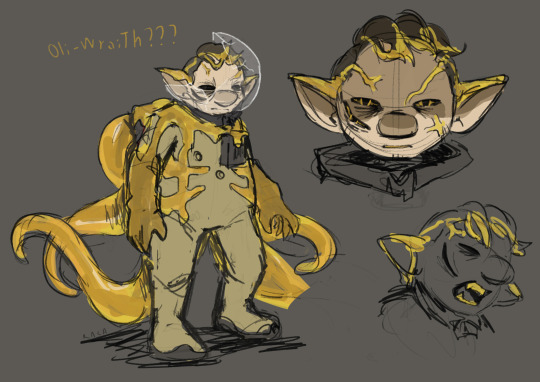
Sooo very very scribbly but I really wanted to put this on paper screen. whatever
Olimar possessed by plasm wraith. Might change the design later and all, but the concept is: The wraith, being a lonely creature, takes control of the prey that falls on her planet and consumes their minds and bodies slowly, until they've been completely assimilated.
But she has a preference for the bravest exploreres, the ones who survive the best on her planet, hence her obsession with the man who not only survived and ecaped but had the nerve to return.
The Wraith is in control most of the time, though sometimes she lets Olimar for a bit just to see how he'll react
"Ok man but how did the Wraith sligthly changed Olimar's clothes colors are they a fcking designer now" LEAVE ME ALONE OK IT LOOKED BETTER LIKE THIS
I also like rerring to the Wraith as a she, I think it fits
#tw body horror#cw body horror#tw possession#cw possession#pikmin#pikmin fanart#pikmin 3#captain olimar#plasm wraith
135 notes
·
View notes
Text


tbh I have no idea what's on this blog anymore.. 50% chance I've posted anything before already :,D
old drawing of sunny and jo! they're always finding neat abandoned junk. regular urban explorerers, those ones
30 notes
·
View notes
Text

...Notably missing from my earlier OCs as dungeon meshi exploreres was Vallus. That's because of all of them Vallus is definitely most like Izutsumi.
So have a cursed cat-Vallus as a terrible treat. He refuses to do things he doesn't like also and routinely scratches everyone in the face. (Honestly whether he is a cat or not.)
#dnd#dungeons & dragons#tabaxi?#catfolk?#vallus#oc#vampire#my ocs#dungeon meshi#izutsumi#he is so angry#fanart
24 notes
·
View notes
Text


[ 𝗔𝗱𝘃𝗲𝗻𝘁𝘂𝗿𝗲 𝗝𝗼𝘂𝗿𝗻𝗮𝗹 #𝟮𝟮𝟬 ]
I didn't tell them.
Well, okay- I mean, I didn't tell them 𝘦𝘷𝘦𝘳𝘺𝘵𝘩𝘪𝘯𝘨.
And I know, I know- I can hear you yelling from here.
But let me at least try to explain my argumentation to you first-

I don't know if you know anything about my Dads- but you see, I'm kinda a pro-expert on the subject.
And if you've met them ( and lived ) you're probably super evil, some sort of spy, or really really lucky.
(𝘐'𝘮 𝘵𝘩𝘦 𝘵𝘩𝘪𝘳𝘥 𝘰𝘯𝘦 𝘣𝘵𝘸)

It's not that they don't care, it's just that sometimes they care so much it hurts them.
Like- when I was six, I fell off stairs in the lounge.
I broke my arm, but most importanter was afterwards I wasn't allowed to use those stairs without an adult watching until LAST YEAR.
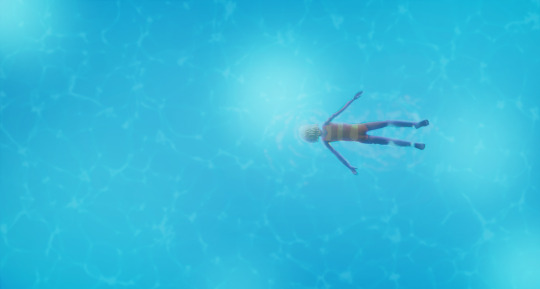
So it's not really lying- more like, protecting them the whole truth.
My dads lie all the time for work and stuff. I'm just leaving some more important parts out.

During the interrogation I kept my story simple.
I told them it was fuzzy- some rocks shook loose in the cave after the storm - 𝘵𝘩𝘦 𝘵𝘳𝘶𝘵𝘩, and I got so turned around and confuzzled I eventually had to swim out. -𝘢𝘭𝘴𝘰 𝘮𝘰𝘴𝘵𝘭𝘺 𝘵𝘩𝘦 𝘵𝘳𝘶𝘵𝘩.
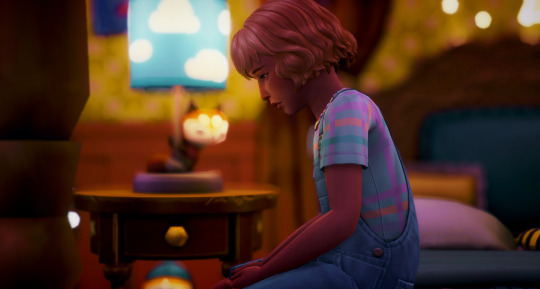
If I told my dads everything- about my ship, about the ocean, about - y'know like the whole everything- they'd never let me out of their sight! Least until I turned super old like them or something.
No more pirate ships, no more explorerations, and no more Adventure Journals.

And if evil dad found out about the whole ocean water breathe-y thing!? I'm not stupid. He'd want to run all kinds of weird tests on me.
Like I get it, I was born in a tube in the lab- but I definitely wasn't planning on spending my whole summer in one too.

I know they didn't really believe me. Mostly because I kept hearing them yelling at each other when they thought I wasn't around.
HANSEL told me that's what adults like to do when they get scared.
42 notes
·
View notes
Text

I made a pmd 2 au with a few of my ocs because of course I did. Lance the venasuar here is the human from the future with a little twist he landed much earlier in the past than the start of the game’s events. With no memories he lives his life becoming an explorerer and eventually marrying the then wooloo who found him his now wife Arrow. They have a child picture above Harpe! She’s the one who finds the relic fragment using it as a good luck charm to help motivate her for falling in her father’s footsteps as an explorer.
24 notes
·
View notes
Note
Hiya! I notice you’ve played a lot of dnd rangers just like me! I wanted to ask what draws you towards the class? what do you enjoy about the class? And what do you think is the classes identity what makes a ranger ?
I’ve played swarmkeeper feywanderer horizon walker drakewarden and gloomstalker, I’m drawn towards the class in part because I’m a Ranger irl it’s my day job, but I also love the jack of all trades support vibe of the class it doesn’t excel anywhere but can help every class with a little bit of something and I view the classes identity as the professional adventurer someone who spends their life balancing the threats of the world whether that be the threats of the wild the monsters who inhabit it or the people who cross it, balancing their needs, kinda like Geralt of rivia balancing the needs of “monsters” and people, they work to make the world a safer better place picking up whatever skills and magic help them survive, I also note that every dnd class is either some form of Hunter or Tamer, the gloomstalker, horizon walker ,hunter and monster slayer, hunt the creatures of the wild, while the drakewarden, the swarmkeeper, the beast master and the fey wanderer spend their time befriending and taming the monsters of the wild. I don’t mean to answer my own question but I’m interested as someone who’s played the ranger just as much as me how your opinions may differ (I also especially love your borrower style ranger the little fellow is so cute and very well drawn)
Thanks for listening to my rambling and questions you can ignore this if it’s too much for whatever vibe you’re feeling rn have a lovely day !
hi!! Fun fact, i actually havent played any rangers 🥴 I'm the kinda dnd player who plays in like 2-3 campaigns but makes like 50 ocs. ASDFJKSDJF (I've only played a cleric and a barbarian in campaigns, but for oneshots I've tried every race) Id love to play one, but its kinda hard to do that for a oneshot since so much of the ranger class is dependent on favoured terrain/knowing your surroundings and levelling.
This is SUCH a fun ask because I LOVE the ranger class for its very niche yet versatile character archetype. I think if there's one type of word I could use to describe a ranger is a survivalist — the rangers that I do have, a handful of them are fashioned after Scouts/parkrangers (because....I was one.) or famous character types that do a lot of adventuring like cowboys, pirates, explorers etc. — if I'm being honest, ranger is the most 'adventurer' type there is!
(as a note here, i know pointy hat has mentioned a ranger's big thing was an animal companion -- i think?? IDR -- which is like a fun take. I really like his stuff, but i feel like a class shouldn't be bound to smth like a pet. any class can have pets!)
To use my own as an example, I have a bounty hunter devil cowboy (monster slayer), a princess-mononoke-ish Artemis huntress (hunter), a HouYi type ancient hero with 3-legged crows (swarmkeeper), an Indiana jones style explorerer (horizon walker) and a borrower (beast master). I really love the idea of all of them being really different but all being excellent survivalists and navigators!
Im a big fan of rangers that have fighting styles other than archery too. I think archery is awesome for the fighting style, but having duelist (like the borrower) or dueling (monster hunter) gives it an extra bit of flavour to just "class that wields a bow". it also sets them apart from a fighter bc in my head a fighter is more military while a ranger is more solitary. It establishes them as a martial class for sure, but its so versatile and has that edge that comes with dex-based instead of str-based.
I particularly like monster slayer bc to me that was very like...witcher-y. The cowboy is a monster slayer with favoured foes as humanoids bc he only tracks humanoids (bounties), which is some fun flavouring. There's a lot of customization! To clarify, there's a lot of room for flavour, but not as much choice for character builds (like, mechanically, at least compared to stuff like warlocks.)
The addition of magic also helps give it some class distinction :0
TLDR: mixes the best aspects of rogues and fighters with LOTS of room for flavour text.
12 notes
·
View notes
Text



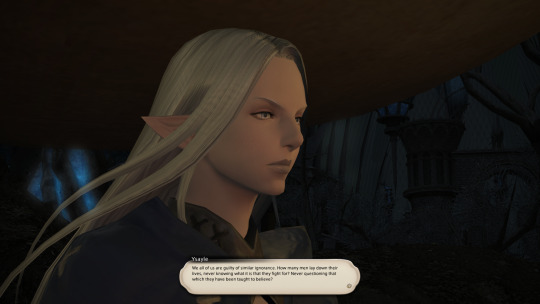





Alphinaud: Ahh... few things compare to the simple pleasure of sitting beside a crackling campfire of one's own making.
Estinien: Hah! So speaks the "great explorerer." Until recently, you wouldn't have recognized firewood if it came with kindling and a flint.
Alphinaud: 'Tis well you instructed me so patiently, then! But yes, left to my own devices, I would have been compelled to signal to Ysayle with a pile of damp leaves. I was born the pampered son of a Sharlayan dignitary, and, alongside my twin, became the youngest student ever to be accepted into the Studium. How proud I was to match wits with scholars and philosophers... How ignorant of mine own shortcomings... That hubris invited manipulation and betrayal... and led to the downfall of the Scions.
Ysayle: We all of us are guilty of similar ignorance. How many men lay down their lives, never knowing what it is they fight for? Never questioning that which they have been taught to believe? 'Twas only upon meeting Hraesvelgr that I learned the truth hidden within our history. Were it not for that chance encounter, I would never have vowed to tear down the Holy See, and expunge the falsehoods with which it fans the flames of conflict. I would have lived and died in ignorance. That the truth has driven me to do terrible things, I cannot deny, but I would rather sin in the pursuit of peace than imagine myself virtuous for perpetuating a needless war.
Alphinaud: If this journey has taught me anything, it is the importance--and difficulty--of holding to one's convictions in the face of failure… of striving always to replace one's ignorance with knowledge.
Estinien: You are well on your way, Master Alphinaud. At your age, I was but a fool swinging a spear, with scarcely a thought in my head. Even now, I struggle to acknowledge the misconceptions under which I have labored.
Waiting for the Wind to Change
#waiting for the wind to change#heavensward#ffxiv#alphinaud leveilleur#ysayle dangoulain#estinien varlineau
27 notes
·
View notes
Text
Yandere One Piece x Jujutsu kaisen
"Cat and Mouse; and Vice Versa"
Inspiration from https://uquiz.com/quiz/X7eTrx/whats-your-jujutsu-kaisen-cursed-technique Gotten the Chasseur Cat
With the ability of the Chasseur Cat, you have the capabilities of flying and invinsibility qualitfy to be title as an assassin run.
What if one day while wrking to exorcist a scorrere you fell into the vast of blue sea, you didn't get wet of course, you jsut fly overhead walking as if the air was your own made floor visiting island from isalnd.
Ir was a year later you adjust to your particular lifestyle, the best one too. Wokring of your ass of with a higer up who couldnn't care less a dissaperence of a soccere, it not uncommon, it does sting leaving all your family freind behind.
Meh waht can you do, thankfully being an explorere you are even isakaie to one peice tou explore island to isalnd finding adventure and mission all with a swift of your curse technquye.
You were gladed when you run inot a group, group of pirate well known throughout the grandline who have a aprticulat interest of a person with no devil fruit power capable to do such flight and dissaperence in a blink of an eye.
Now you are on a run avoiding any capture to will force you working doing their dirty deed.
------------------------------------------------------------------
I was in a mood of cat in mouse, but this little mousey got a few trick up their sleeves.
#whitebeard pirates#x reader#yandere#yandere x reader#pirate reader#yandere pirate#one piece yandere#jujutsu kaisen#jujutsu reader#story prompt#short prompt#reader insert#self insert#story ideas#rp prompts#jujutsu kaisen x one piece#one picec x jujutsu kaisen#cat and mouse#game#crossover#yandere crossover#curse technique
47 notes
·
View notes